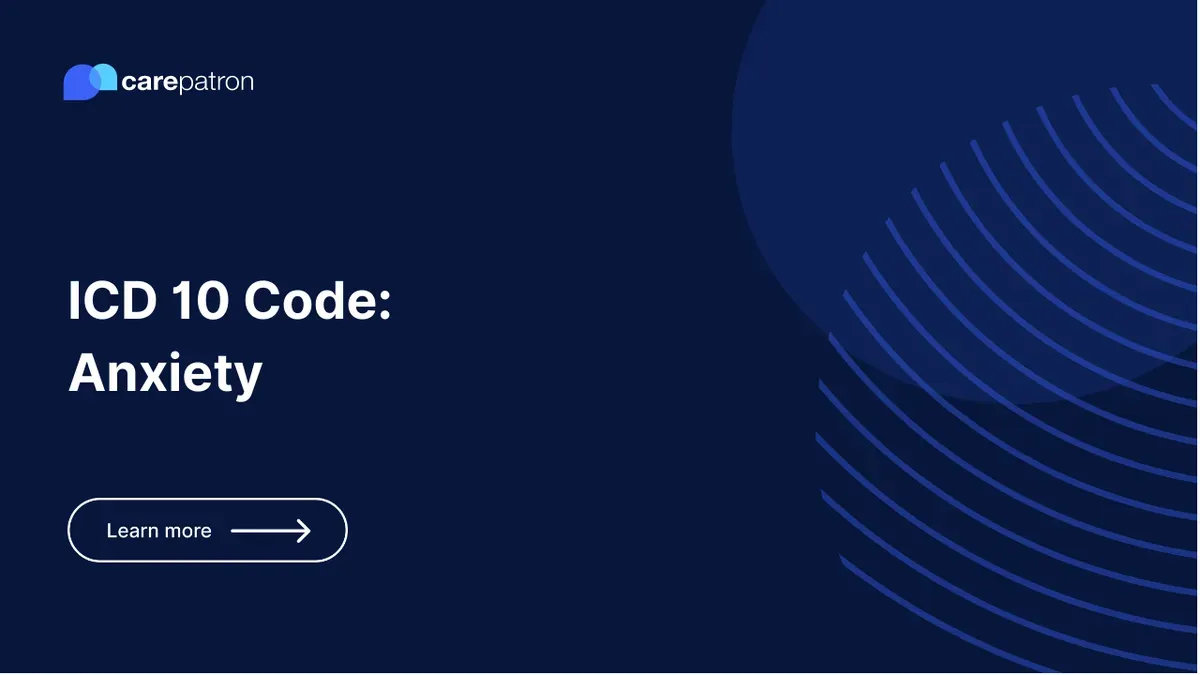
Anxiety ICD-10-CM Codes
Looking for ICD-10 codes for Anxiety? Check out this mini-guide to learn about some of the ICD-10 codes you can use and clinical information about Anxiety.
Use Code
EHR and practice management software
Get started for free
*No credit card required
Free
$0/usd
Unlimited clients
Telehealth
1GB of storage
Client portal text
Automated billing and online payments
